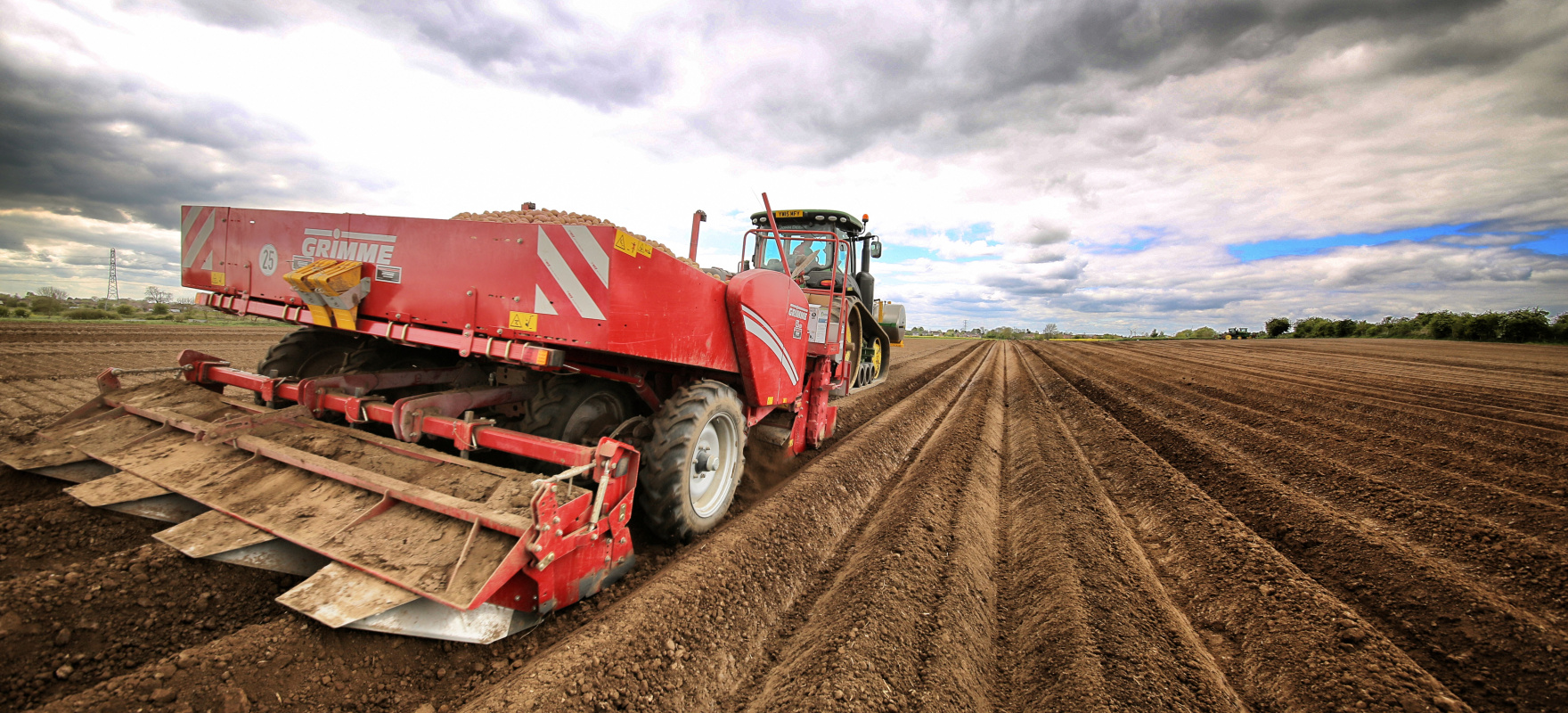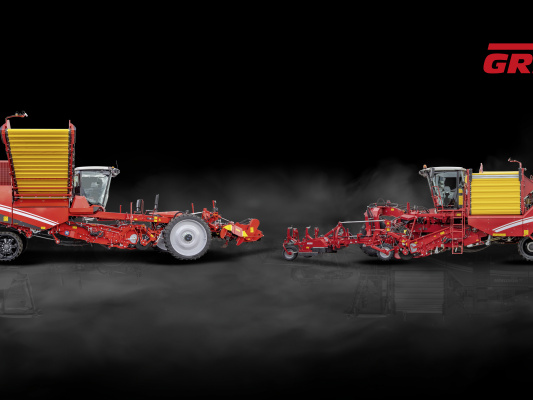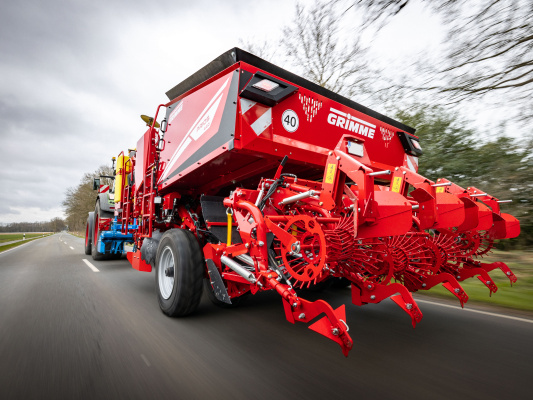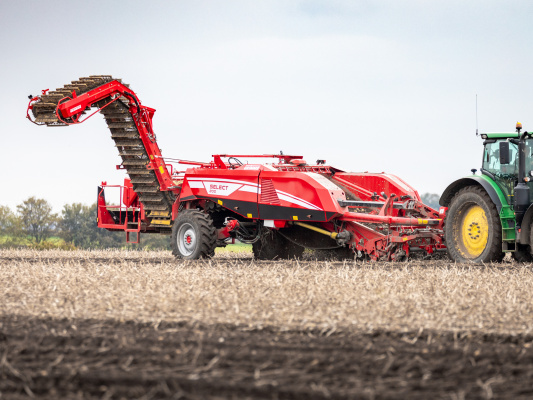
Four row potato planting improves output and cuts costs
SAYS WILL GAGG
Cutting potato establishment costs while increasing output without compromising yield or quality has been a key focus
Cutting potato establishment costs while increasing output without compromising yield or quality has been a key focus for Lincolnshire potato grower Will Gagg of RJ and AE Godfrey’s Eastoft Grange Farm near Scunthorpe.
With a responsibility for 830 acres of maincrop potatoes grown for the pre-pack market, Mr. Gagg believes he is well on course for finding the solution, with the 2017 season being the fifth since changing his planting regime. Despite average yields dipping to 16t/ac in 2015 the farm’s five-year average is 22t/ac. Varieties include Maris Piper, Nectar, Melody, Saphire, Desiree, Safari and Estima, which suit the predominantly silty soils with irrigation.
Mr. Gagg says that traditionally the planting operation on the farm involved a six or seven pass system starting with the plough followed by deep ridging, two passes with a bed tiller, then declodding and finally planting.
After the appalling weather conditions at planting in 2012, Mr. Gagg realised that he had to find a system that would mean he could decide when the best time was to plant rather than being dictated to by the weather due to the limited number of dry days at planting.
As a result, he approached Grimme in 2013 to see what options were potentially available to boost output and wrestle back control from the weather, bearing in mind at the time he operated a 2-row system. It was suggested that output could be improved by switching to a 4-row planting system.
“We had also seen a 4-row system working in Holland which was impressive, so we developed our own with input from Grimme,” says Mr. Gagg. “This year will be our fourth season planting potatoes based on a 4-row system. We have easily reduced our establishment costs by £150/ac without compromising yields, and our output is now about 45ac/day with an average forward speed of 7kph. In 2015 we planted 450 acres with one machine which took 18 days.”
For the new regime to work the land is still ploughed early when it is dry and left to frost mould to help break the soils down into a fine tilth as well as bury trash and weeds. At planting a Basilier with subsoiler tines prepares the ground straight in front of the planter to a depth of 40cm, which leaves a ‘flat cultivated top no-bed scenario’. The cultivator operates around the clock using two drivers working in 12-hour shifts.
“On some of our lighter soils we don’t even need to go in with a Basilier,” says Mr. Gagg. “Instead we just go straight in with our planting rig onto frosted plough work.
“A key difference is that we are not bringing up soil from deep down,” he says. “We are only interested in using the top frost moulded soil. With a lot of the deep ridging systems used on farms, we feel it creates a plough like environment which is not conducive to establishing a good crop.
“Our bedtiller/planting combination produces loose soil and light seedbed,” he explains. “Hydraulic ridge pressure with ‘Kit-Kat’ ridging hoods on the planter, adjustable from the cab, helps to keep a regular flow of soil continually moving through it. Running the planter on the flat, un-ridged soil means we can pull it from a central position, rather than offset. We aim for about 6.5-7 inches of depth.”
Replacing the old 2-row planter is a Grimme GL430T trailed 4-row planter fitted with a GR360 bedtiller/rotary cultivator and various other appliances to provide Amistar, nematicide and liquid fertiliser, which is pulled by a low ground pressure John Deere 360hp crawler.
“The GL430T planter is simple to use,” says Mr. Gagg. “And we have had very few breakdowns – this is a key point when under pressure during planting, where downtime is not an option. “The only testing incident we have had was when an axle broke in the morning, but by 3pm Grimme had got us up and running again.”
By planting in the right conditions he says there has been a marked decrease in disease incidence, especially Rhizoctonia that can easily reduce yields by 4t/ac. Crop health has also improved because potatoes are being planted into warmer soils.
“When we switched planter we opted for a cup planter because we wanted to achieve specific spacing and this can’t be achieved in our opinion with a belt planter. The only downside is that we have to have one staff member permanently carting seed to keep the planter going. We operate with two high tip trailers with one always in the field.”
Mr. Gagg also operates another two Grimme GL430T 4-row planters. The original planter with tiller and front mounted liquid fertiliser applicator plants 550 acres in North Lincolnshire, East Yorkshire and the Isle of Axholme. A second GL430T rig with GR360 rotary tiller plants 250 acres in the Holbeach area. A third GL430T planter without a tiller currently is used to plant 300 acres on rented land on the Wolds.
The GR360 rotary tiller hangs independently on a three point linkage in front of the planter and can be lifted and lowered hydraulically from the cab. If the planter hits a heavy patch in the field, the depth can be adjusted accordingly. Two extra wheels on the planter help take the weight of the tiller.
“Any additional appliances, such as for Amistar, nematicide and liquid fertiliser, are all bolted on to the main planter frame without any requirement for gas welding,” says Mr. Gagg. “The tillering, planting, Amistar and nematicide application plus liquid fertiliser placement are all done in one pass now. It has so far proven to be a great success.”
Despite its size – easily 40ft in length with full planting kit and front mounted liquid fertiliser tank – Mr. Gagg says it is still very maneuverable because the GL430 has independent steering. He also says that there has been a massive fuel saving, with the crawler using between 450-550l/day.
“It’s a big planting rig but the only real downside is the fact that the cab is like a spaceship inside with a host of individual controls to run different appliances such as VC50 for the planter, a Chafer/Horstine control for liquid fertiliser, a TMAir control for nematicide, an AS120 Amistar applicator and all the GPS electronics.”
See the GL430 in action in the video below.
Innovation
Whether its new machines or digital solutions, you'll find all the latest information here.
Display all updates







